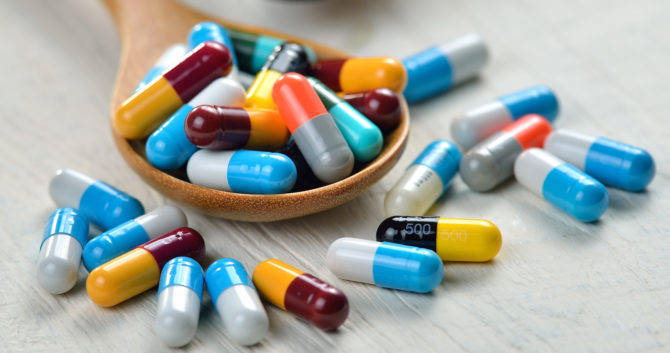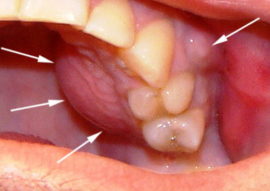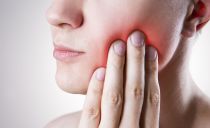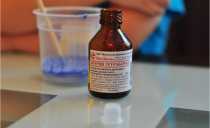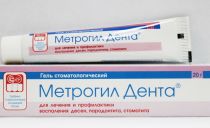What antibiotics can be taken with tooth flux and how to choose the best drug
Purulent periostitis or flux is called an inflammatory process localized in the periosteum. A neoplasm appears on the gum, in which a purulent secret accumulates. This condition threatens the health and even human life, therefore, with the appearance of early signs of a problem, emergency intervention of specialists is required.
The key method of therapy for gum flux in an adult is taking antibiotics. Today, many effective drugs have been developed.
Content
When antibiotics are required
Therapy of periostitis should begin as early as possible, since there is a high probability of the spread of pus in the tissues of the face, neck and chest. The result of this process will be fatal. The universal method of treating an adult from periostitis is the use of antibacterial drugs. They are used both in the initial phases of the disease, and after surgical removal of the abscess.
Which antibiotics is preferable to drink with a tooth flux for one or another adult depends on the state of his health and the phase of the disease. An important role is played by the state of the patient's immune system. Taking antibiotics becomes appropriate in the following cases:
- If the start of the inflammatory process is provoked by the entry into the body of streptococcal or staphylococcal bacteria.
- In the presence of purulent formations.
- With therapy after surgery.
- To prevent complications.
The use of a drug prescribed by a doctor at the initial stage of periostitis formation allows avoiding the formation of an abscess and quickly relieving inflammation. Self-medication in such a situation is dangerous and leads to the development of serious complications.
The principle of action of antibiotics
Dental flux antibiotics are detrimental to pathogenic microflora, which acts as a key cause of the disease. Most drugs are characterized by a wide spectrum of action. They are effective not only in the fight against gram-positive cocci and staphylococci, but also against other pathogens.
Antibacterial drugs kill bacteria, as a result, the production of poisonous waste products of pathogenic microflora stops. As a result, the symptoms of periostitis are removed: the body temperature decreases, pain is eliminated, the size of the neoplasm decreases.
After a certain period of time, the medicine is removed from the body in the traditional way. Chemicals are adsorbed in the digestive tract and excreted along with feces and urine. To make this process easier, experts advise drinking drugs before meals.
Key features of antibiotic therapy
Inflammation of the periosteum must be treated in compliance with several key rules:
- Antibiotics for periostitis are drunk at identical intervals of time, this will create the right concentration of the active substance in the blood. Most often, the interval between doses is 8 hours, then you will have to take the drug three times a day.
- What antibiotics to take with flux on the gums and in what quantities, the doctor determines. Changing the prescribed dosage is prohibited.If side effects begin to appear, you should immediately contact the clinic.
- Drink the medicine is recommended non-carbonated table water. The use of other liquids for these purposes provokes a decrease in the effectiveness of the agent.
- The duration of the course is chosen by a specialist, but cannot be shorter than five days.
Some patients with the disappearance of negative symptoms interrupt the therapy ahead of schedule, it is strictly forbidden to do this. Such an act will aggravate the course of the disease and lead to the development of complications. Only the dentist can correct the duration of therapy after conducting appropriate laboratory tests.
- In the course of therapy, follow a diet. Antibiotics negatively affect the digestive system, so it is forbidden to overload the digestive tract with indigestible food. Enter more vegetables, berries and fruits on the menu. Forget about fried, fatty, smoked dishes, alcoholic drinks, sweets, as well as products containing preservatives and other chemical additives.
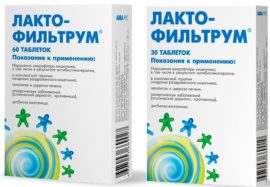 The use of antibiotics leads to the death of beneficial intestinal microflora and the development of dysbiosis, which is manifested by a digestion failure, excessive gas formation, pain in the stomach and intestines. The use of probiotics and prebiotics will help to prevent side effects: Lactofiltrum, Hilaka Forte, Linex.
The use of antibiotics leads to the death of beneficial intestinal microflora and the development of dysbiosis, which is manifested by a digestion failure, excessive gas formation, pain in the stomach and intestines. The use of probiotics and prebiotics will help to prevent side effects: Lactofiltrum, Hilaka Forte, Linex.- Before starting therapy, carefully read the instructions that come with the drug. Learn all the nuances of using a particular tool.
Effective antibiotics
Today, an extensive list of drugs used for tooth fluxes is available. They are produced in the following forms:
- Tablets or capsules. Such drugs are easy to dose and take. The shell quickly dissolves in the gastric juice, and the active substance enters the bloodstream. An antibiotic in this form of release can be drunk with flux in both adults and children.
- Ointments and creams. Superimposed directly on the periosteum. Only the early stage of the disease is treated with such drugs, they effectively reduce the painful sensations that accompany periostitis, and have an anti-inflammatory effect. Ointment must be used several times a day.
- Solutions for injection. Such antibiotics are used in dentistry for inflammation of the periosteum in an advanced stage. An injection is given intravenously or intramuscularly. The active substance instantly enters the circulatory system and reaches the site of infection.
Separately, one can distinguish such a form of antibacterial drugs as syrups. They are used to treat babies; syrups are used extremely rarely in dentistry.
Best pill-shaped antibiotics
Most often, antibiotics in the form of tablets are used to treat flux, they can quickly cure the disease. The list of the most effective drugs includes:
- Lincomycin. His dentists recommend more often than all other means. This drug is recognized as the most powerful and is characterized by a wide spectrum of action. With flux, lincomycin is drunk at a dosage of 500 mg per day, the capsule is washed down with clean water. In some situations, after the use of the drug, the appearance of side effects is noted: hypertension, nausea, dizziness. For patients suffering from severe disorders in the functioning of the liver and kidneys, Lincomycin is replaced with another drug.
- Cyprolet. An antibiotic from the fluoroquinolone group, which is effective against most microorganisms that cause the appearance of flux. Bacteria are not able to adapt to the influence of Tsiprolet, which determines its effectiveness.
 Ciprofloxacin. It is a direct analogue of Tsiprolet. It is produced in dosages of 250, 500 and 750 mg. Ciprofloxacin should not be used during pregnancy, breastfeeding, as well as under the age of 18 years. Drinking these pills is better on an empty stomach.
Ciprofloxacin. It is a direct analogue of Tsiprolet. It is produced in dosages of 250, 500 and 750 mg. Ciprofloxacin should not be used during pregnancy, breastfeeding, as well as under the age of 18 years. Drinking these pills is better on an empty stomach.- Amoxicillin. A variety of semi-synthetic penicillins. It is forbidden to use with individual sensitivity to the substance, as well as infectious mononucleosis. Amoxicillin dosage is selected according to an individual scheme for each patient. In exceptional cases, after the use of Amoxicillin with flux, urticaria, signs of conjunctivitis or a runny nose are manifested. In such a situation, you will have to interrupt the therapy and choose another drug.
- Ampioks. The composition of the drug includes ampicillin and oxacillin, due to this it has a complex effect. The duration of therapy is about 7 days. Sometimes there is a manifestation of an allergic reaction to the medication, in which case it is worth replacing it with another antibiotic.
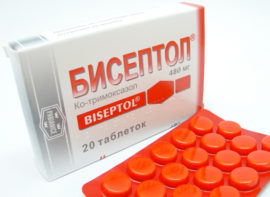 Biseptolum. One of the most popular drugs for periostitis. Its popularity is due to the minimum list of side effects. Biseptol is not indicated for flux during pregnancy, as well as for the diagnosis of severe diseases of the liver, kidneys and blood. Approved for the treatment of adults and children. The specific dosage is selected in accordance with the body weight of a person. In rare cases, Biseptolum leads to the appearance of allergic manifestations, headaches or nausea.
Biseptolum. One of the most popular drugs for periostitis. Its popularity is due to the minimum list of side effects. Biseptol is not indicated for flux during pregnancy, as well as for the diagnosis of severe diseases of the liver, kidneys and blood. Approved for the treatment of adults and children. The specific dosage is selected in accordance with the body weight of a person. In rare cases, Biseptolum leads to the appearance of allergic manifestations, headaches or nausea.- Doxycycline. One of the most powerful drugs, so the daily dose does not exceed 100 mg. Doxycycline is prohibited for use in bearing a child, porphyria, myasthenia gravis, leukopenia, as well as severe liver failure. With flux, doxycycline is taken once a day or a single dose is divided into two doses.
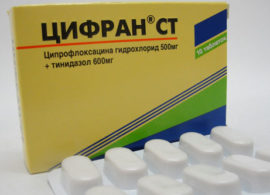 Digital. Included in the group of fluoroquinolones. Its use allows you to quickly stop the spread of the inflammatory process and eliminate the cause of the disease. Suitable for the treatment of mild and severe forms of periostitis. With flux, Tsifran should be taken twice a day. During therapy, it is recommended to refrain from visiting the beach, since the components of the drug increase the sensitivity of the skin. Digital is indicated for at least two weeks.
Digital. Included in the group of fluoroquinolones. Its use allows you to quickly stop the spread of the inflammatory process and eliminate the cause of the disease. Suitable for the treatment of mild and severe forms of periostitis. With flux, Tsifran should be taken twice a day. During therapy, it is recommended to refrain from visiting the beach, since the components of the drug increase the sensitivity of the skin. Digital is indicated for at least two weeks.- Azithromycin A modern medicine from the macrolide group. Its advantage is a mild effect on the body. The list of contraindications and likely side effects is minimal. Azithromycin is approved for use while carrying a baby, suitable for the treatment of people with an allergy to penicillin.
- Flemoxin Solutab. The active substance of this agent is amoxicillin. The main feature of the drug is its rapid absorption into the blood. The components are transported at lightning speed to the epicenter of infection and suppress inflammation. Flemoxin is widely used in pediatrics.
Gum flux tablets are dispensed only upon presentation of a prescription from a doctor. Their uncontrolled use leads to negative consequences.
Injection drugs
To find out which antibiotic is best prescribed for a patient with tooth flux, the doctor determines the severity of the disease and the patient's condition. In severe situations, it is recommended that the drug be administered intravenously or intramuscularly, with the help of injections, a positive result can be quickly achieved.
Among the most popular medicines are:
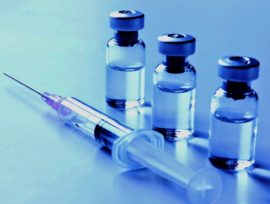 Amoxiclav. A complex preparation containing amoxicillin and clavulanic acid. It inhibits the activity of most known pathogenic microorganisms. Amoxiclav performs better than cephalosporins and penicillins. Allowed for children and the elderly. The use of Amoxiclav is prohibited in severe liver diseases, lymphocytic leukemia, as well as individual intolerance to the active substance. Amoxiclav is not used to treat flux in expectant mothers, as it can cause harm to the baby.
Amoxiclav. A complex preparation containing amoxicillin and clavulanic acid. It inhibits the activity of most known pathogenic microorganisms. Amoxiclav performs better than cephalosporins and penicillins. Allowed for children and the elderly. The use of Amoxiclav is prohibited in severe liver diseases, lymphocytic leukemia, as well as individual intolerance to the active substance. Amoxiclav is not used to treat flux in expectant mothers, as it can cause harm to the baby.- Ampioks. Combined medication with a wide spectrum of action, contains ampicillin and oxacillin. It does not affect the digestive tract and has a minimum list of contraindications.
- Ampicillin. Effective against streptococcus and staphylococcus.It has an average bioavailability, so it has recently been used less often. Today, ampicillin is replaced by more effective analogues with a wide spectrum of action.
Injectable antibiotics for the cheek and gum fluxes require proper dosing. They can provoke muscle weakness, gastrointestinal problems, headaches and some other side effects.
Antibacterial ointments
Gum flux can be treated with antibiotics in the form of ointments and gels. The best drugs:
- Levomekol. It allows you to quickly stop the growth of bacteria and restore damaged cells. It is used for gum and cheek lesions. The ointment is injected into the abscess cavity after opening it and left for some time.
- Vishnevsky ointment. It inhibits the activity of bacteria and has an anti-inflammatory effect. The composition of the ointment includes a natural antibiotic - xeroform. This drug can only be used in the initial stages of the development of the disease - before the abscess has formed. The composition is spread on a gauze napkin and applied to the cheek in the area of inflammation.
- Metrogil Dent. It is produced in the form of a gel. The composition of the drug includes chlorhexidine and metronidazole. The medication quickly eliminates swelling and pain in the area of inflamed tissues, prevents the formation of an abscess.
In dentistry, antibiotics in the form of ointments are used with flux only as an auxiliary medicine. It is customary to combine their use with tablet preparations, which increases the effectiveness of treatment several times.
You can take antibiotics for tooth flux only after consulting a doctor. Self-medication is fraught with irreparable consequences, therefore, when the first signs of a problem appear, immediately contact a clinic.

